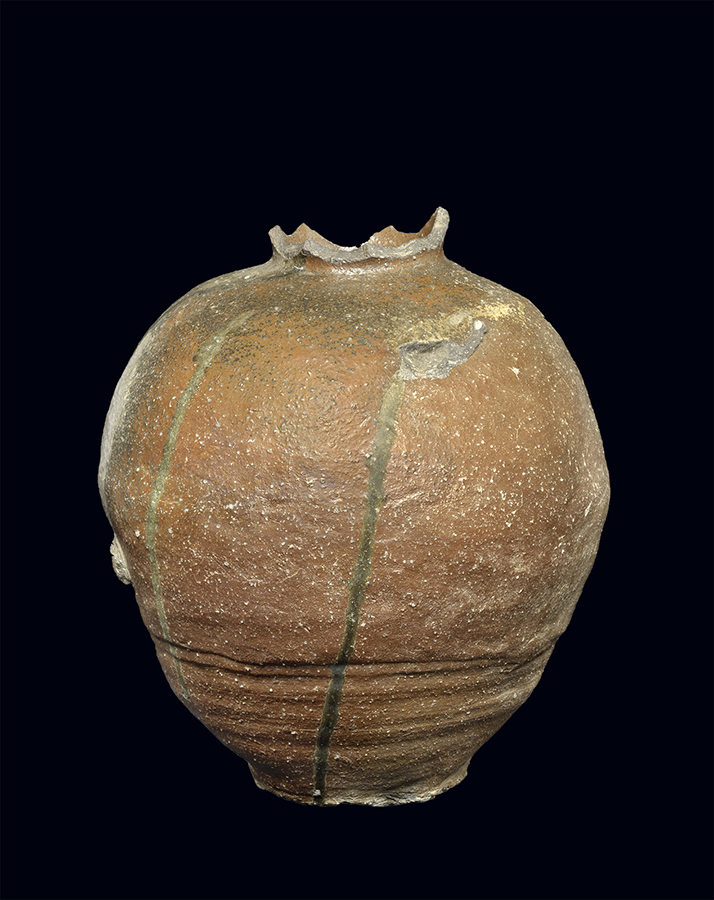Bizen tokkuri
Ceramic
- Contact Us
-
Material
Bizen-yaki
-
Size
22.5 x 22.5 x 28 (h) cm
-
Period
Momoyama period (1573-1603), 16th century
Description
Bizen tokkuri - Sake bottle
Bizen Ceramics (Bizen-yaki) is a type of Japanese ceramic originally produced in Bizen Province, present-day Okayama Prefecture.
It is characterized by high physical resistance, its brown-red color, the absence of glaze, as well as external traces resulting from firing in kilns.
Bizen ware was traditionally produced in and around the village of Imbe in Bizen province, from where it received its name. It is therefore also known as Imbe or Inbe ware. It has ties to Sue pottery from the Heian period in the 6th century, and made its appearance during the Kamakura period of the 14th century.
Bizen was considered one of the Six Ancient Kilns by the scholar Koyama Fujio. It experienced its peak during the Momoyama period of the 16th century. During the Edo period, the Ikeda lords of the Okayama domain continued to support the kilns and gave special privileges to families who operated them.
The rustic quality of Bizen made it popular for use in Japanese tea ceremony. Ware of the early phase is called old Bizen style (古備前派 Ko-Bizen-ha).
Bizen is characterized by significant hardness due to high temperature firing; its earthen-like, reddish-brown color; absence of glaze, although it may contain traces of molten ash resembling glaze; and markings resulting from wood-burning kiln firing.
The clay found in Imbe is sticky and fine, with a high iron content and, traditionally, much organic matter that is unreceptive to glazing. For some potters this is an inadequate material, since it has weak characteristics such as high shrinkage and relatively low fire resistance. Most Bizen ware is not coated with a glaze because of this shrinkage, since any applied glaze would peel off during the firing process. Due to its low fire resistance it cannot withstand rapid high-temperature changes, so the firing has to be done gradually. However, the soil also has beneficial properties, such as plasticity. The high strength of Inbe clay causes it to retain its form, making it tough even without glaze.

